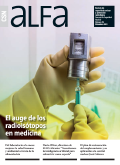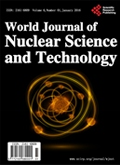 |
 |
 |
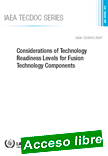 |
Considerations of Technology Readiness Levels for Fusion Technology Components
IAEA-TECDOC-2047 ¦ English ¦91 pages ¦ Date published: 2024
Technology readiness levels (TRLs) provide a standardized and objective method for evaluating the maturity of different technologies and their different components, making it easier for all stakeholders to understand and use. By using TRLs in specific technology programme planning, everyone from government and research organizations to private sector developers, end-users, and the supply chain can benefit from a consistent and transparent evaluation process.
|
This publication addresses the growing need for the use of TRLs in fusion programmes, and it is expected that their use will continue to increase in the future. This publication is intended for technologists, researchers, university professors and students, regulatory experts, nuclear engineers, and nuclear fusion plant planners.
|
 |
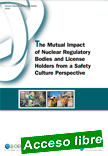 |
The Mutual Impact of Nuclear Regulatory Bodies and License Holders from a Safety Culture Perspective
Human Aspects of Nuclear Safety ¦ NEA No. 7672¦ OECD, NEA ¦ 80 pages ¦ Date published: 2024
Most safety incidents are often not due to a technical fault or the actions of a single individual, but rather originate in a compromised safety culture – the collection of the beliefs, perceptions and values that employees share in relation to risks within an organisation, such as a workplace or a community. Regulatory bodies, by their very nature, have a deep influence on the safety culture of nuclear site licence holders.
|
But this influence can also flow in the other direction, from licensee to regulatory body. Based on the insights from senior practitioners worldwide, this report examines the factors and mechanisms by which nuclear regulatory bodies and site license holders influence the safety culture of the other. It presents a model, accountability-oriented, enabling regulation, for a regulatory body’s approach to foster a licensee’s accountability for safety. This approach builds on the concept of performance (or outcome) based regulation, but also includes a focus on risk (or hazard), processes, and licensee selfassessment. Two main factors determine the extent to which a regulatory body is able to adopt an accountability-oriented, enabling approach: the maturity of the safety culture at the licensee and in the regulatory body. In both cases, the more mature the safety culture, the more an accountability-oriented, enabling regulatory approach is likely to succeed. Regulatory bodies and licensees are encouraged to use this report to assess the health of their interactions and identify areas for improvement and good practices to share.
|
 |
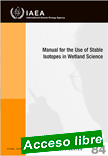 |
Manual for the Use of Stable Isotopes in Wetland Science
Training Course Series No. 84 ¦ English ¦ IAEA-TCS-84 ¦ 80 pages ¦ Date published: 2024
The manual has been structured to facilitate online training of scientists and technicians with limited prior knowledge of wetland environments or isotopic techniques. A problem based pedagogy is adopted, with training focused on case studies illustrating common problems and widely applied techniques. Step-by-step instruction is provided in appropriate experimental design, common sampling methods in wetlands, sample preparation and the operation of IRMS.
|
An introduction is provided to the interpretation of results, including the application of source mixing models and their limitations.
|
 |
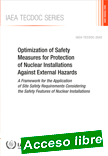 |
Optimization of Safety Measures for Protection of Nuclear Installations Against External Hazards. A Framework for the Application of Site Safety Requirements Considering the Safety Features of Nuclear Installations
IAEA-TECDOC-2042 ¦ English ¦ 136 pages ¦ Date published: 2024
This publication covers two main aspects of safety against external events including the site hazard assessment and the robustness of the installation against external hazards. This publication provides practical guidance and information for the development of the technology-neutral safety framework for assessing the applicability of site evaluation requirements considering site-installation interactions and taking into account the innovative safety features of the advanced reactors.
|
A methodology is provided for an overall optimization of safety measures against external hazards, including the use of a risk-informed approach, supporting the effective and balanced implementation of the defence in depth concept. This methodology covers the application of grading that considers the safety features of the nuclear installation, allowing for a reduced implementation time/cost while ensuring robustness of the installation for applicable hazards. This publication is useful for both new and existing nuclear installations and is intended to be used by regulatory bodies, designers, operating organizations, vendors, research institutes, and technical support organizations working in the area of nuclear safety.
|
 |
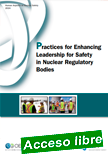 |
Practices for Enhancing Leadership for Safety in Nuclear Regulatory Bodies
Human Aspects of Nuclear Safety ¦ NEA No. 7673 ¦ OECD, NEA ¦ 36 pages ¦ Date published: 2024
This report presents practical guidance to enhance leadership for safety in nuclear regulatory bodies. It identifies the effective characteristics, competencies and behaviours of leaders in regulatory bodies that have a healthy safety culture and lays out programmes and processes that can continuously improve that safety culture.
|
Some 12 characteristics and competencies that emerged from the original research underpinning this guide are identified as essential to the development of effective leadership for safety in regulatory bodies. These are grouped into three aspect categories and are accompanied by examples of good practices for the regulatory body as an organisation and good practices for the individual. A five-step programme to embed effective leadership for safety in the regulatory body are also provided. Each step is operationalised through examples of good practices and practical tools for the organisation and for the individual.
|
 |
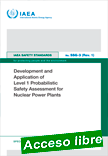 |
Development and Application of Level 1 Probabilistic Safety Assessment for Nuclear Power Plants
IAEA Safety Standards Series No. SSG-3 (Rev. 1) ¦ English ¦ STI/PUB/2056 ¦ 239 pages ¦ Date published: 2024
The objective of this Safety Guide is to provide recommendations for meeting the requirements of GSR Part 4 (Rev. 1) in the development and application of Level 1 Probabilistic Safety Assessments (PSAs) for nuclear power plants (NPPs). The recommendations provided in this publication promoting technical consistency among Level 1 PSA studies, in order to provide reliable support for applications of PSAs and risk informed decision making, particularly to support the design of NPPs and decision making during plant commissioning and operation.
|
The revised Safety Guide's scope encompasses the main methodological aspects of PSA and in particular has been updated to reflect developments in specific areas, such as passive systems reliability, computer based systems reliability, combinations of hazards, human reliability analysis and to expand the scope of PSA to include site level risk considerations such as multi-unit and spent fuel pool PSA.
|
 |
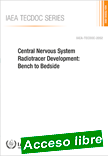 |
Central Nervous System Radiotracer Development: Bench to Bedside
IAEA-TECDOC-2052 ¦ English ¦ 104 pages ¦ Date published: 2024
This publication provides an overview of central nervous system (CNS) radiotracer development, discussing different aspects and stages of development. Non-invasive neuroimaging with radiotracers can provide functional information at the cellular level and contributes substantially to understanding the complex mechanisms of the functioning and pathophysiological processes in the human brain and is useful in certain diseases for patient stratification, treatment response monitoring and as an aided technique for drug development.
|
The success of the development of clinically significant radiotracers depends on many factors such as the selected biological target, specificity and affinity of the radio ligand, pharmacokinetics of radiotracer and others. The information provided in the document will be useful to researchers, students and professionals engaged in the development and deployment of CNS radiotracers for clinical, research or drug development applications.
|
 |
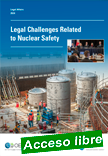 |
Legal Challenges Related to Nuclear Safety
NEA No. 7664 ¦ English ¦ OECD, NEA ¦ 223 pages ¦ Date published: 2024
There are many types of legal challenges that can be raised in the context of the peaceful uses of nuclear energy. Each country’s framework for legal challenges related to the peaceful use of nuclear energy depends on its national legal system. Because each country’s national legal structure is distinct, it is important for lawyers, as well as law- and policy-makers, to have a comparative understanding of the different frameworks for legal challenges.
|
Focusing only on legal challenges related to nuclear safety, the aim of this report is to provide insights into the frameworks for legal challenges related to nuclear safety and, without making any general recommendations, identify commonalities and differences that contribute to different countries’ approaches. By collecting information from nearly 25 NEA member and non-member countries, this report provides an overall review of the different approaches taken by countries to legal challenges related to nuclear safety, as well as nearly 40 case summaries by 11 different countries and an extensive chart of nuclear law cases from 1987 to the present day.
|
 |
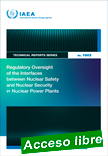 |
Regulatory Oversight of the Interfaces Between Nuclear Safety and Nuclear Security in Nuclear Power Plants
Technical Reports Series No. 1003 ¦ English ¦ STI/DOC/010/1003 ¦ 90 pages ¦ Date published: 2024
There is a growing societal awareness regarding the importance of regulatory systems for nuclear facilities and activities to have visible oversight of safety and security interfaces. This publication compiles relevant IAEA requirements, recommendations and guidance on identifying and addressing potential and actual interactions between nuclear safety and nuclear security systems and measures in nuclear power plants (NPPs).
|
It also presents regulatory practices that are important to consider for nuclear safety and nuclear security, as they may reinforce or compromise the capacity of the regulatory bodies, competent authorities and operating organizations to meet nuclear safety and nuclear security requirements, including requirements relating to the interfaces between safety and security, during the application of regulatory functions in the various stages of the lifetime of an NPP.
|
 |
 |
Nuclear Energy for Net Zero: Accelerating Investment in Clean Energy Transitions
IAEA/PAT/006 ¦ English ¦ 24 pages ¦ Date published: 2024
This outlook produced for the G20 under the Presidency of Brazil (2024) is written to inform the Energy Transitions Working Group (ETWG) within the G20 Sherpa Track as well as the wider international energy and climate change community. This publication provides an overview of the contribution of nuclear energy to global climate change mitigation pathways toward net zero, highlighting the investment requisites.
|
Global mitigation scenario pathways disseminated by the Intergovernmental Panel on Climate Change (IPCC) and the International Energy Agency (IEA) indicate significantly more nuclear electricity – a doubling or more by 2050 – as a key part of the solution to limit global warming to the 1.5 and 2 degree goals of the Paris Agreement. Nuclear heat and hydrogen can also play a role in decarbonizing hard-to-abate activities in heavy industry and transportation. Unlocking and accelerating investment would be necessary for the rapid deployment of nuclear energy, including in emerging markets and developing economies. This calls for consistent climate, energy and investment policy frameworks — embracing a wide array of financing approaches — in tandem with efficient markets, effective project risk management and multi-stakeholder cooperation to accelerate annual nuclear energy investment to reach net zero. This publication presents key information and data to support and advise decision makers.
|
 |
| |
|
|

|
|
|
| |
|
|
| |
| |
|
|
| |
| |
|
|
| |
| |
|
|
|
| |
| |

